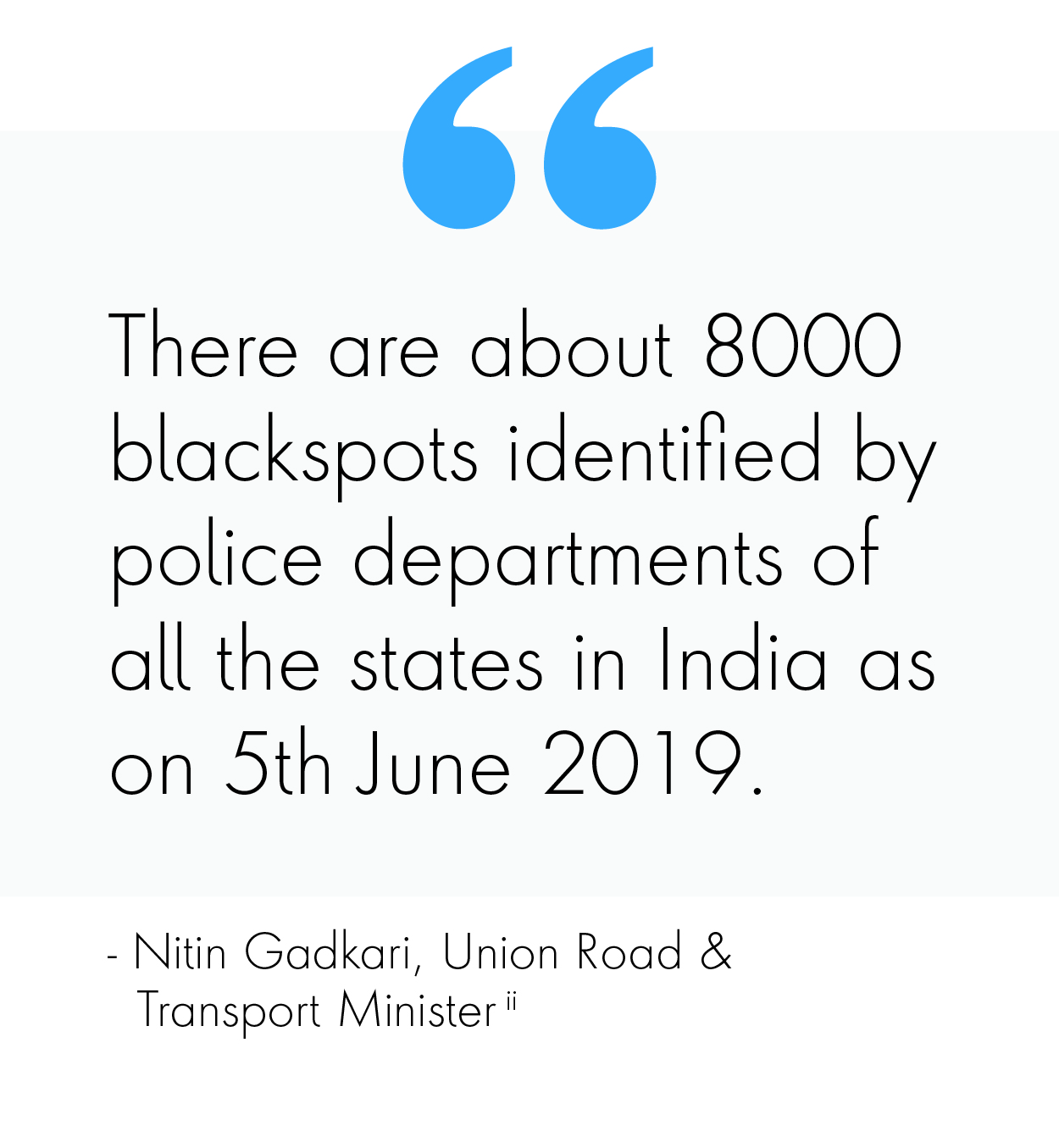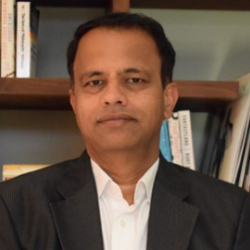Understanding the behavior of road accidents
The number of fatal accidents on Indian roads kills three people every 10 minutes, accounting for 15% of the world's road fatalities. The challenge was very real, and something had to be done about it.
While most people exercise adequate caution while driving, those selected 'blackspots' result in accidents. The primary measure to tackle roads' safe behaviors is a good, superior road design that enables smooth and safe traffic flow. But a slew of practical contingencies like paucity of land, funds and local demands lead to deviations and precipitate a critical accident spot (blackspot).
Also, data attributes over 84%i of these accidents to human error. In contrast, only 0.3% is attributed to faulty road design: illustrating that drivers deviate and adhere to unsafe practices despite being aware of safe driving practices. This indicates that the problem does not lie in awareness, but rather on that awareness not translating into action. This awareness-action gap is the biggest challenge on the Indian roads.

Key facts
-
2/3
Accidents happened on national and state highways.
-
86%
Road fatality victims are males, belonging to the most economically productive age group.
-
77%
Accidents are caused due to over speeding.
-
67%
Fatalities occur on straight roads, i.e. 97k out of 151.4k, indicating 'overconfidence' and 'familiarity' leading to risk-seeking behaviors.
Insight was the key

By blending advanced AI with an intimate understanding of human behavior, we designed a solution that guided people subconsciously. We aimed to interrupt bad driving rituals and instigate positive decision making. We did this with our step by step process:
Risk assessment: Combining AI and behavioral science capabilities, we first understood the accident/black spot context and built the behavioral hypothesis and potential intervention points for the desired results.
Monitor: Post-implementation, observe the impact after for 90 days and assess the situation.
Our impact
-
63%
Reduction in accidents
-
40%
Reduction in fatalities
-
Worked on 1700 Km of roads in India across various terrain & geographical features.
-
Addressed around 175 blackspots over the last 7 years.
-
26 National Highways Authority of India (NHAI) were recognized blackspots as of 2018. We have addressed 12 of them.
-
7 National Highways Authority of India (NHAI) were recognized blackspot among the network. 'We have worked on 1 of them as of July 2020.
Our experts

Ram Prasad

Benis Kumar Moses
References
- Road Accidents in India, 2016, MoRTH; p26
- https://timesofindia.indiatimes.com/topic/Road-accident/news
















